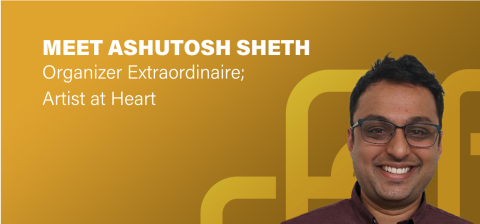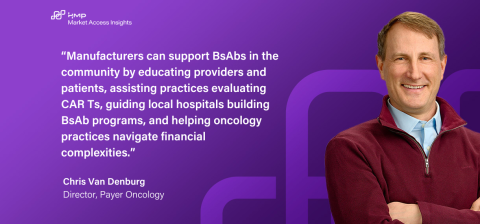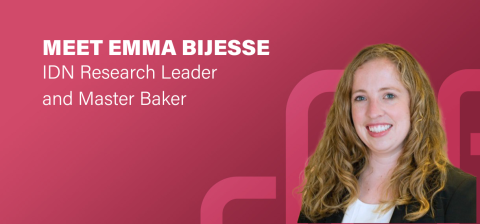

Article
The Enhancing Oncology Model: What Lies Ahead for Participants?
August 01, 2023Authors
Topics
CMMI has launched its new oncology pilot, the Enhancing Oncology Model, sparking questions about its new features vs the Oncology Care Model, the benefits and concerns for participating practices, and CMMI’s ability to successfully implement the program.

The highly anticipated new Enhancing Oncology Model (EOM) launched on July 1, 2023. As the successor program to the Center for Medicare and Medicaid Innovation’s (CMMI) Oncology Care Model (OCM), EOM marks another opportunity for oncology practices to gain experience with value-based care (VBC). Its launch includes key programmatic changes and features that are generating significant concerns and challenges for participating practices, both OCM veterans and new participants alike.
Current Status of EOM
As of July 12, a finalized list shows that 44 practices encompassing 561 sites of care are participating in EOM, out of the initial 67 practices that expressed intent to participate. Of these 44 practices, 30 are OCM veterans. The actual practice number is higher, as the American Oncology Network, a network of multiple oncology practices operating under a single tax ID, is listed as a single entity.
HMP Market Access Insights’ 2022 Community Landscape Report featured an in-depth review of EOM’s program features. Like OCM, EOM operates on 6-month episodes of care for Medicare beneficiaries. However, the types of therapies included in EOM have been constrained to patients receiving systemic chemotherapy for seven specific cancer types: breast cancer, lung cancer, small intestine/colorectal cancer, lymphoma, chronic leukemia, multiple myeloma, and prostate cancer.
EOM offers participants a monthly enhanced oncology services (MEOS) payment for providing enhanced services to eligible Medicare beneficiaries ($70 per beneficiary, per month, with an additional $30 for dually eligible beneficiaries). The MEOS payment is less than the $160 MEOS payment that providers received under OCM.
Most crucially, EOM participants face downside risk for patients’ total cost of care from the start. Under OCM, participation in downside financial risk was optional for the first few performance periods for some practices and through the entire pilot for others. Under EOM, participants have the option of two risk arrangements:
- Upside risk will be 4% of the benchmark amount and downside risk will be 2%
- Upside risk will be 12% of the benchmark amount and the downside risk will be 6%
In both risk arrangements, participants will owe a performance-based recoupment if their expenditures are greater than 98% of the benchmark amount for a given episode of care.
Perceived Value in Joining EOM
Seeking stakeholder perspectives of EOM, Ron Barkley from the Cancer Care Business Exchange garnered the opinions of several OCM veterans. They cited a few key reasons for participating:
- OCM’s process reengineering improved coordination of care, and EOM could allow them to continue to improve.
- EOM offers useful experience with a VBC program that is “likely a semblance of what [their] future reimbursement structures are from all payers.”
- EOM provides an opportunity to explore population health strategies in oncology.
Practices can see the potential value and positive impact of the new care model. But do those potential benefits outweigh the potential risks?
Provider Concerns
The program’s financial incentives and risk structure is a pivotal concern to thoughtful providers.
- Lower provider financial incentives: Some providers, especially those with smaller practices, expect that the smaller MEOS payment will not cover the additional services and resources needed for implementation. The more limited pool of eligible patients further restricts the potential revenue for practices.
- Change in risk structure: Practices fear that down-sided risk from the program’s start leaves them with a very small margin for error. The lack of a “trial period” may hinder practices’ ability to meet quality and savings metrics from the start.
- Potential billing flaw: Although CMMI now calculates benchmark prices using separate price predictive models, new therapy adjustments, and other trend factors for each cancer, an analysis done by the Community Oncology Alliance (COA) found what may be a potential flaw in the methodology used for breast cancer. By including fulvestrant (a hormonal therapy) as an initiating therapy despite its frequent use in combination with CDK 4/6s in HR+/HER2- breast cancer, COA predicts that practices could face an 8.3% greater spend than predicted, which could have detrimental downstream effects for a practice’s performance and financial risk in EOM.
CMMI’s Challenging Path Forward to a Successful Model
With practices’ lower interest in EOM as compared to OCM and rising concerns, CMMI faces a significant challenge to prove the merits of their new oncology model and its benefits to participating practices. Alexandra Chong, a team lead for both OCM and EOM, describes this challenge as “trying to meet the needs of a delicate balance.” Balancing practices’ needs for MEOS payments with the new risk structure and balancing CMMI’s implementation of a successful model with a diverse range of participants are key elements of this challenge.
It will take time to see if practice participants can rise to the occasion and see success in the new model, or if their concerns end up ringing true. For more perspectives on EOM, listen to the Enhancing Oncology Model episode from our Insights to Access podcast series, available on Apple Podcasts and Spotify.
The Latest
Article
Meet Ashu: Organizer & Researcher Extraordinaire; Artist at Heart
Ashu is the glue that keeps our team organized and running smoothly. This year, he’s been particularly fascinated by the growing consolidation among community practices and how it’s reshaping the oncology landscape.
Ashutosh ShethArticle
Beyond AMCs: CAR Ts and Bispecifics in Community Oncology
CAR T-cell and BsAb therapies are powerful but largely confined to AMCs, limiting patient access. Our latest report explores how expanding to community oncology could improve access, addressing key clinical, logistical, and financial challenges.
Chris Van DenburgArticle
Meet Emma: Research Leader and Master Baker
Not only does Emma have over a decade of experience supporting academic health systems and integrated delivery networks (IDNs), but she’s also the go-to for a delicious apple pie.
Emma Bijesse





